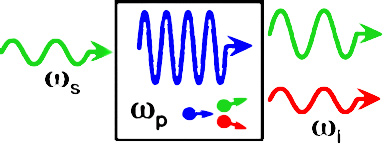Existing protocols for quantum communications or quantum key distribution (QKD) have been based on single or few photons as information carriers. The efficiency of such protocols becomes very low when the communication distance is long. This is because single photons are fragile to linear loss. Taking detector noise into account, the rate at which secure keys can be generated rapidly decreases. Thus far, the highest key generation rate achieved over a distance of 100 km using existing quantum communication architectures is only thousands of bits per second (~kbps) and the maximum transmission distance is of only 250 km, equivalent to 42.6 dB loss.
Quiness aims to devise new architectures for quantum communications with significantly increased generation rate of secure keys and extended transmission distance. In order to overcome the transmission loss, we aim to encode information in “macroscopic” quantum states containing many photons occupying a high-dimensional Hilbert space. At the same time, in order to guarantee physical security we would like to employ QKD protocols that have been developed along the same principles as those underlying the BB84 protocol or its derivatives, whose security against eavesdropping has been generally accepted.
Specifically, our architectures for high-rate, long-distance quantum communications are based on optimally encoding information in macroscopic quantum states and decoding such information using revolutionary, highly-efficient d-dimensional quantum-state tomography (d-QST) via quantum frequency conversion (QFC) at the receiver end(s). The macroscopic states contain many photons spread over m wavelength-division-multiplexing (WDM) channels where in practice m on the order of 100 is readily achievable using the existing fiber-based telecommunications infrastructure and standard WDM channels. In addition, within each WDM channel the photon lives in a d = 2*t*s dimensional Hilbert space formed by two polarizations, t orthogonal temporal modes, and s orthogonal spatial modes. For practical parameters, we estimate that t in the 10–100 range and s >10 are feasible with existing optical technology.
Hence, the total dimension of the Hilbert space such macroscopic quantum states can subtend is well in excess of 10,000 (including WDM channels), with which >5,000 parallel quantum-communications channels can be established through a single fiber telecom connection. Such use of high-dimensional photons thus decouples the transmission loss from the rate at which secure keys would be generated. To achieve the full usage of such channels, we further apply quantum-Zeno blockade, a highly-nonclassical effect proposed recently by us that can generate strong photon-photon interactions in solid nonlinear material systems, to create entanglement deterministically. Finally, at the receiver ends we employ collective and adaptive information processing using d-QST to extract the maximal amount of information out of the few received photons. Such high information encoding and decoding capacity, together with the high clock-rate (1−10 GHz) the entire system can operate on, is essential for achieving high securekey rates in long-distance quantum communications.
For the proposed macroscopic quantum-communications architectures, we estimate, based on realistically achievable parameters listed above, that secure keys can readily be generated at rates on the order of a GHz over a distance of hundreds of kilometers. Furthermore, with the use of quantum repeaters, which do not require secure enclaves for their operation, we hope to achieve quantum communications with secure key generation over distances >1000 km. This so far undemonstrated technology requires adding entanglement swapping and quantum memory for light, which we will implement in specially designed, robust solid-state material systems, to the “standard” quantum communications architecture.
Publications
-
A. S. Kowligy, K. McCusker, Y. -Z. Sun, Y. -P. Huang and P. Kumar, "Single-photon driven nonlinearities in microcavities," accepted in QCMC (2014)
-
A. S. Kowligy,* P. Manurkar,* N. V. Corzo, V. G. Velev, M. Silver, R. P. Scott, S. J. B. Yoo, P. Kumar, G. S. Kanter and Y. -P. Huang, "Quantum optical arbitrary waveform manipulation and measurement in real time," Opt. Express 22, 27942-27957 (2014) [*denotes equal contribution] http://dx.doi.org/10.1364/OE.22.027942
-
P. Manurkar, N. V. Corzo, P. Kumar, G. S. Kanter and Y.-P. Huang, "Selective up-conversion of two orthogonal signal modes using shaped pump pulses," paper FTh1B.3, Frontiers in Optics (2014) http://www.opticsinfobase.org/abstract.cfm?URI=FiO-2014-FTh1B.3
-
J. Larikova, V. Velev, P. Kumar and Y.-P. Huang, "Quantum communications with overlapping time modes: Optimal receiver capable of dispersion compensation," paper FTu4A.4, Frontiers in Optics (2014) http://www.opticsinfobase.org/abstract.cfm?URI=FiO-2014-FTu4A.4
-
K. Wang, V. Velev, K. Lee, A. Kowligy, P. Kumar, M. Foster, A. Foster, and Y. Huang, “Multichannel photon-pair generation using hydrogenated amorphous silicon waveguides,” Opt. Lett. 39, 914-917 (2014). http://dx.doi.org/10.1364/OL.39.000914

